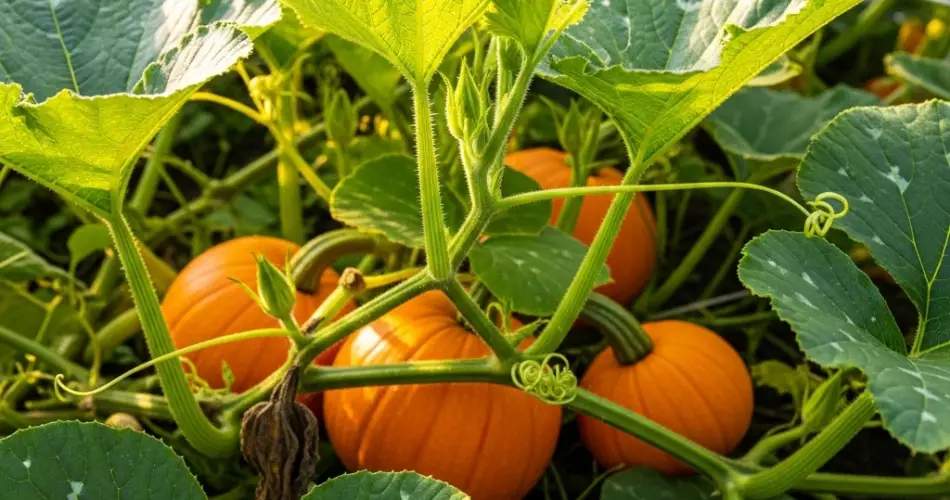Pumpkins are a rewarding crop to grow, but getting a truly abundant harvest isn’t just about planting seeds and waiting. Many gardeners are surprised when their pumpkin vines sprawl wildly but produce only a few fruits—or worse, none at all. Whether you’re growing pumpkins for decoration, cooking, or carving, understanding the specific needs of this robust but sometimes tricky plant can make all the difference.
Here’s how to maximize your pumpkin yield using a few lesser-known but highly effective techniques.
1. Start with the Right Variety
First, choose the pumpkin variety that best suits your goals and growing conditions. Not all pumpkins are created equal—some are bred for size, others for flavor, and others for ornamental purposes.
-
Small to medium varieties (e.g., ‘Jack Be Little’, ‘Sugar Pie’) tend to produce more fruit per plant.
-
Large varieties (e.g., ‘Big Max’, ‘Atlantic Giant’) need more space and energy, usually resulting in fewer but much larger pumpkins.
If your goal is to maximize yield in number rather than size, opt for smaller, bush-type varieties suited to compact spaces and quicker harvests.
2. Prepare Nutrient-Rich Soil
Pumpkins are heavy feeders. If the soil isn’t rich and well-prepared, the plants may grow lots of leaves but produce little fruit. To prevent this:
-
Add compost or well-rotted manure before planting. Pumpkins love organic matter.
-
Ensure your soil is loose and well-draining to allow root expansion and nutrient uptake.
-
Mix in a balanced fertilizer (or one slightly higher in phosphorus) at planting time to support early root and flower development.
Test your soil pH if possible—pumpkins thrive in slightly acidic to neutral soil (pH 6.0–7.0).
3. Space and Sunlight Are Key
Pumpkins need room to spread. Crowded vines compete for light and nutrients, often resulting in fewer fruits.
-
Space vines 3 to 5 feet apart if you’re growing standard types.
-
Bush or compact varieties can be planted closer, but still give them about 2 feet between plants.
-
Choose a location with full sun—at least 6–8 hours per day. Lack of sunlight can slow growth and reduce fruit production.
If space is limited, train the vines to grow vertically using a strong trellis and support the fruit with slings as they develop.
4. Encourage Pollination
Poor pollination is a common reason pumpkins don’t develop properly. Pumpkin plants produce separate male and female flowers, and pollinators like bees must transfer pollen between them.
-
Avoid using pesticides that could harm bees.
-
If you don’t see bees, try hand-pollinating in the early morning. Use a small brush or gently rub a male flower’s stamen onto the center of a female flower (identifiable by the small fruit at its base).
-
Plant bee-attracting flowers nearby like marigolds, zinnias, or borage to increase pollination activity.
5. Water Deeply and Consistently
Pumpkins need a steady supply of water, especially during flowering and fruit development. However, overwatering or watering incorrectly can lead to fungal issues or root rot.
-
Water deeply once or twice a week, giving the plants about 1–2 inches of water per week.
-
Avoid overhead watering. Use a soaker hose or drip irrigation to deliver water directly to the roots.
-
Apply mulch to help retain moisture, regulate soil temperature, and suppress weeds.
Be extra attentive during dry spells or heatwaves, as pumpkin plants wilt quickly under stress.
6. Prune Strategically
While it might seem counterintuitive, trimming back excessive growth can improve yields. Left unchecked, vines may sprawl endlessly and invest energy in growing foliage rather than fruit.
-
Once the vine has developed 2–3 healthy pumpkins, pinch off the ends of the main vines to stop further growth.
-
Remove any new flowers that appear late in the season, as they are unlikely to mature in time.
Directing the plant’s energy toward maturing existing fruit helps maximize size and ripeness.
7. Monitor for Pests and Diseases
Pumpkins are susceptible to pests such as squash bugs, cucumber beetles, and vine borers. Common diseases include powdery mildew and downy mildew.
-
Inspect plants regularly and remove pests by hand or use organic insecticidal soap.
-
To prevent fungal problems, ensure good air circulation and avoid wetting the foliage.
-
Rotate crops annually and avoid planting pumpkins where other cucurbits (like squash or cucumbers) have grown in the past 2–3 years.
Healthy plants are far more likely to yield heavily than stressed or diseased ones.
Final Thoughts
Achieving a high-yield pumpkin harvest isn’t about luck—it’s about method. From selecting the right variety to optimizing soil, water, and pollination, every detail plays a role in success. With a little extra effort and attention, you can turn a few seeds into a garden full of vibrant, healthy pumpkins—ready for your kitchen, your fall decorations, or even the local fair.
Now that you know the real secrets behind a bumper crop, it’s time to put them into action in your own garden.



